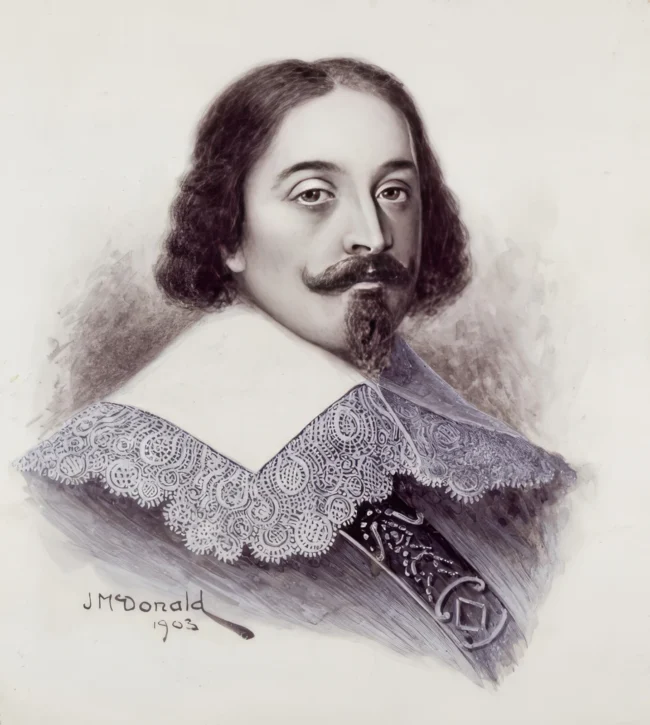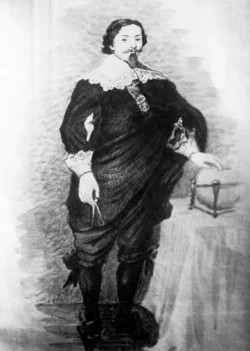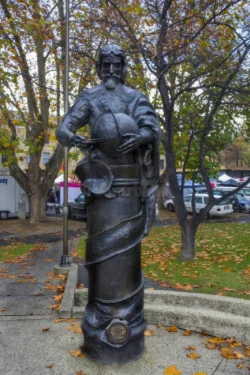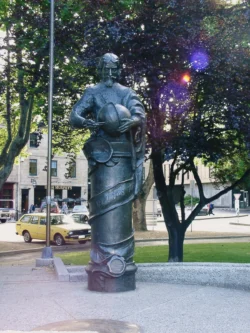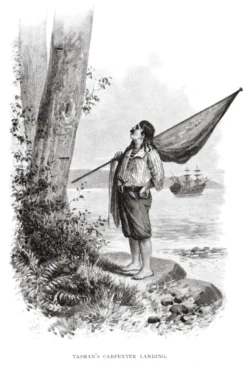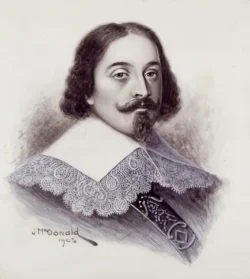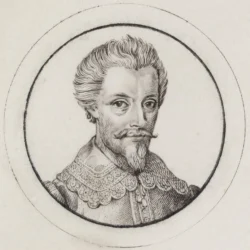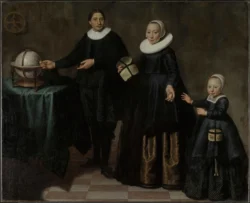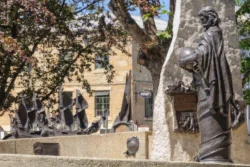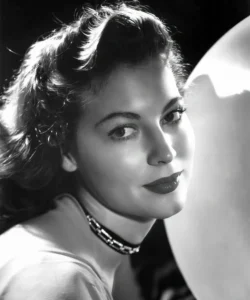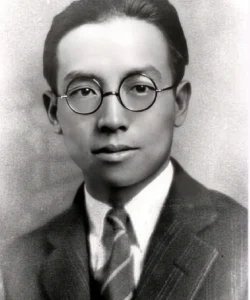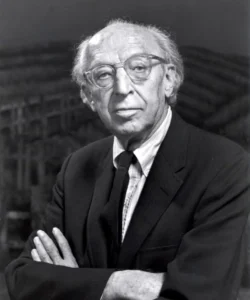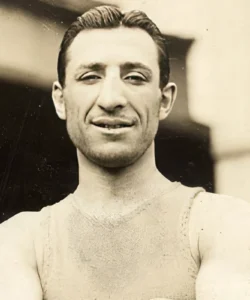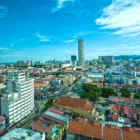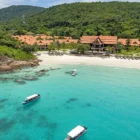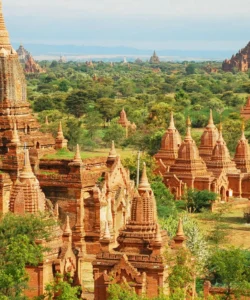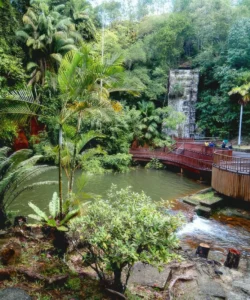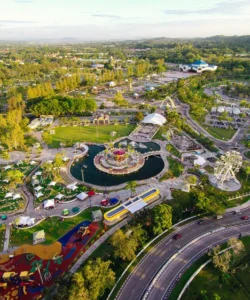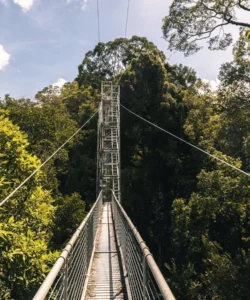Name: Abel Janszoon Tasman
Introduction: Abel Tasman was a Dutch seafarer, explorer, and merchant. He is best known for his voyages of 1642 and 1644 in the service of the Dutch East India Company (VOC), during which he made the first known European contact with Tasmania (which he named Van Diemen’s Land) and New Zealand, and sighted the Fiji islands. His explorations significantly advanced European knowledge of the Australian continent and the Pacific.
Date of birth: August 2, 1603 (though some sources state “around 1602 or 1603”)
Height: Information not widely available.
Place of birth: Lutjegast, Grootegast, Groningen, Netherlands (then the United Provinces of the Netherlands, or the Dutch Republic).
Family:
- Parents’ names: Jan Abelsz Tasman (father). His mother’s name is not widely publicized.
- Siblings: He had at least two brothers, Tonnis Jansen Tassema and Frans Tassema, and a sister Michiel Tasman.
- Spouse:
- Claesgie Heyndrix (his first wife), with whom he had a daughter.
- Jannetje Tjaers (m. December 27, 1631).
- Children: Claesjen Tasman (daughter, with Claesgie Heyndrix).
- Relatives: His siblings and daughter.
Profession: Seafarer, explorer, merchant, navigator, cartographer.
Nationality: Dutch
Religion: He was a Dutch Protestant and is documented to have made Christian prayers and expressions of thanks in his journal entries. His expeditions for the VOC often had both commercial and religious motivations.
College or university attended: He was largely self-taught in navigation and seamanship, learning on the job while in service with the Dutch East India Company (VOC). Information about formal higher education is not consistently available.
Biography and What Famous For:
Little is known about Abel Tasman’s early life in Lutjegast. He began his career as a merchant seaman, and by 1632, he entered the service of the powerful Dutch East India Company (VOC), which dominated the lucrative spice trade from its base in Batavia (now Jakarta, Indonesia). He quickly proved to be a skilled navigator and was appointed skipper of the Mocha in 1634, engaging in trading and patrolling in the Dutch East Indies. He also participated in an expedition to the north Pacific, reaching Japan in 1639.
Abel Tasman is most famous for his two major voyages of exploration in the South Pacific:
- First Voyage (1642-1643): Discovering Tasmania and New Zealand.
- In August 1642, the Council of the Indies in Batavia dispatched Tasman to search for the “Great Unknown Southern Continent” (Terra Australis Incognita) and to gain knowledge of uncharted lands.
- Sailing south of the known Australian coastline, he became the first known European to sight Van Diemen’s Land (on November 24, 1642), which he named after the Governor-General of the Dutch East Indies, Antonie van Diemen. This island is now known as Tasmania in his honor. He briefly landed there and formally claimed it for the Dutch.
- Continuing eastward, on December 13, 1642, he became the first known European to sight the land that is now New Zealand. He anchored in a bay on the South Island (now called Golden Bay) on December 18, where his crew had a hostile encounter with the Māori, resulting in the death of four of his men. He named the area “Murderers’ Bay.”
- He then sailed north, sighting parts of the Tonga and Fiji islands, before returning to Batavia in June 1643, completing a circumnavigation of the Australian continent (though without seeing the mainland itself).
- Second Voyage (1644): Mapping parts of Australia’s Northern Coast.
- In 1644, Tasman led another expedition, this time to link earlier Dutch discoveries along the northern coast of Australia. His expedition meticulously mapped the coastline from the Gulf of Carpentaria west to the Pilbara region. Although this voyage did not result in new major “discoveries” in the same sense as the first, it significantly improved the mapping and understanding of the continent’s northern reaches.
Despite his remarkable geographical achievements, the VOC shareholders were reportedly disappointed because Tasman did not bring back glittering reports of gold, spices, or immediate profitable trade connections. His discoveries were not immediately followed up by further European exploration or settlement.
Tasman retired from the VOC in 1653 as a prosperous landowner in Batavia and part-owner of a small cargo ship. He died in 1659. His detailed charts and journals provided invaluable information that shaped future European understanding of the Southern Hemisphere, though the full significance of his discoveries would only be recognized later.
Have participated:
Major Expeditions (in service of the Dutch East India Company – VOC):
- First Major Voyage (1642-1643):
- Discovery and first European sighting of Tasmania (Van Diemen’s Land).
- First European sighting and encounter with New Zealand.
- Sighting of the Tonga and Fiji islands.
- Completed the first circumnavigation of Australia (without sighting the mainland).
- Second Major Voyage (1644):
- Mapped significant portions of the northern coast of Australia (from the Gulf of Carpentaria to the Pilbara).
- Other Voyages:
Abel Tasman Photos:
